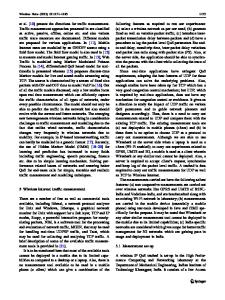A Model for City Traffic
We propose a simple cellular automaton to simulate city traffic. Vehicles on road are treated as particles hopping on a lattice. In the morning rush hours, downtown parking lots are taken as the sinks for vehicles moving from suburban; in the afternoon ru
- PDF / 651,056 Bytes
- 6 Pages / 467.717 x 685.984 pts Page_size
- 101 Downloads / 357 Views
ary. We propose a simple cellular automaton to simulate city traffic. Vehicles on road are treated as particles hopping on a lattice. In the morning rush hours, downtown parking lots are taken as the sinks for vehicles moving from suburban; in the afternoon rush hours, the parking lots become the sources for vehicles moving out of town. The traffic is regulated by the operation of a series of traffic lights on each street block. Both the traffic flow (from global perspective) and the travel time (from personal perspective) are studied. It is found that even in maintaining the same traffic flow, the tuning of traffic lights can significantly affect the travel time, and correspondingly the duration of rush hours.
1 Introduction In the time scale of most interest, traffic problem is intrinsically an inequilibrium problem. As a mean of transportation, vehicles move from one place to another, and rarely did a roadway keep same traffic flow all day. The situation is no more apparent than in city traffic, where large number of vehicles move in and out of the city in relatively short rush hours according to the rhythm of city life. Cellular automaton has been widely used in the study of highway traffic problems [1, 2]. The method proves very successful in simulating and explaining various highway traffic patterns. There have been attempts to extend the method to city traffic, with mixed results [3–9]. Unlike the highway traffic, which is mostly determined by the vehicle density, city traffic pattern obviously is also influenced by other factors, such as operation of traffic lights and the street layout. The highway traffic is characterized by the traffic flow, i.e. the ability to move vehicles from one place to another in certain time. But for city traffic, city itself is the destination, and the ability to absorb and dissipate traffic is crucial, and that is determined not only by traffic flow but by travel time as well. To keep the essence of the city traffic characteristics with as few parameters as possible, we propose a cellular automaton model for the city traffic. For
334
Ding-wei Huang and Wei-neng Huang
the rush hours in the morning, heavy traffic moves from suburban area to downtown center. In the afternoon, the process is reversed. We study the influence of the traffic light control to regulate the traffic. We suspect that the optimization to achieve the highest traffic flow on road might not lead to the shortest travel time for individual, and this in turn will affect the time it takes to absorb or dissipate all the vehicles getting in or out of the city.
2 Model We assume a symmetric city street layout, with equal block lengths and similar traffic movements in all directions. The afternoon rush hours traffic is considered the morning traffic in reverse direction. The system consists of a single-lane roadway with open boundaries, as shown in Fig. 1.
Fig. 1. Configuration of the open system.
Vehicles move in one direction only, i.e. from left (suburban) to right (downtown). Along the roadway, ten traffic lights are set up with equal distance L = 100 to simulate the layout of t
Data Loading...











